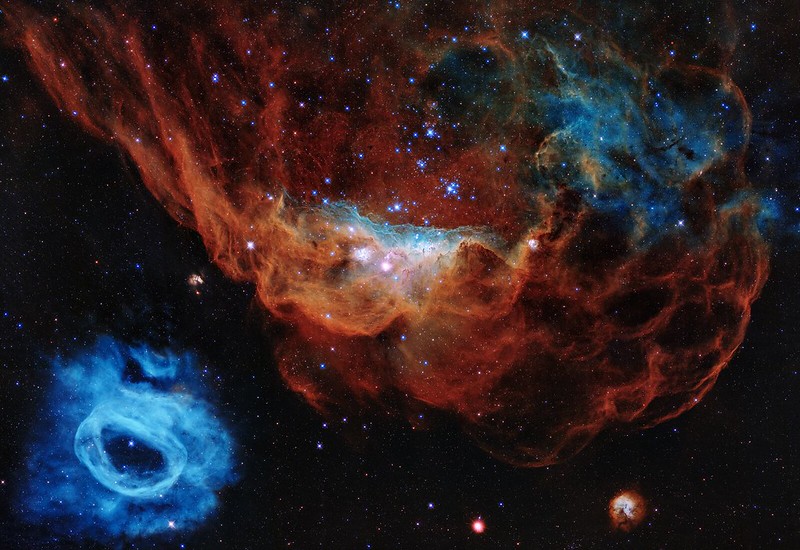This Hubble Space Telescope image shows how young, energetic, massive stars illuminate and sculpt their birthplace with powerful winds and searing ultraviolet radiation.
The giant red nebula (NGC 2014) and its smaller blue neighbor (NGC 2020) are part of a vast star-forming region in the Large Magellanic Cloud, a satellite galaxy of the Milky Way, located 163,000 light-years away. The image is nicknamed the “Cosmic Reef,” because it resembles an undersea world.
The sparkling centerpiece of NGC 2014 is a grouping of bright, hefty stars, each 10 to 20 times more massive than our Sun. The stars’ ultraviolet radiation heats the surrounding dense gas and unleash fierce winds of charged particles that blast away lower-density gas, forming the bubble-like structures seen on the right. The blue areas in NGC 2014 reveal the glow of oxygen, heated to nearly 20,000 degrees Fahrenheit by the blast of ultraviolet light. The cooler, red gas indicates the presence of hydrogen and nitrogen.
By contrast, the seemingly isolated blue nebula at lower left (NGC 2020) has been created by a solitary mammoth star 200,000 times brighter than our Sun. The blue gas was ejected by the star through a series of eruptive events during which it lost part of its outer envelope of material.
This image commemorates Hubble's 30th anniversary in orbit.
For more information about this image, visit:
hubblesite.org/contents/news-releases/2020/news-2020-16
For Hubble anniversary podcasts, videos, interactives and more, visit:
www.nasa.gov/content/hubbles-30th-anniversary
Credit: NASA, ESA, and STScI
Find us on Twitter, Instagram, Facebook and YouTube
